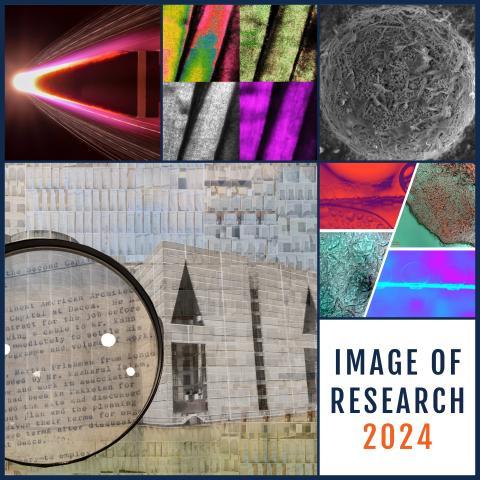
Thank you to every graduate student who entered, the semifinalists, and our panel of judges, as well as to visitors of both the online gallery and the on-site exhibit in the Main Library. Thank you as well to those who voted in the People's Choice competition.
The 2024 Image of Research winners are:
1ST PRIZE ($500 AWARD)
Architecture of the Land by Nubras Samayeen from Landscape Architecture
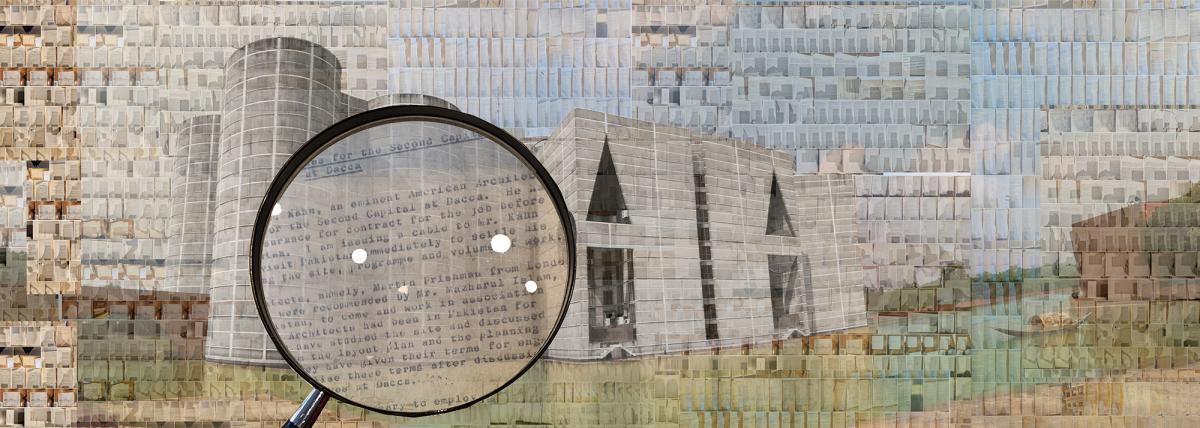
Spending more than 100 days at the University of Pennsylvania’s architecture archive in Philadelphia, excavating into more than 7,000 drawings and 1,000 letters, communications, travel documents, receipts, and photographs exchanged among the designer, clients, and government officials, I investigated the American, modernist architect, Louis I. Kahn’s National Capitol Complex (1963-1983) in Dacca, the capital of previous East Pakistan (now Bangladesh), the eastern part of Islamic Republic of Pakistan. I question- why and how amid the tumultuous Cold War, Kahn designed the most important building of the newly democratic country. My archival findings- texts and visuals- decode the Complex’s design vocabulary as a perplexing paradox. The Complex, that was to be a symbol of Pakistan’s Islamic democracy, followed the models of a church and a synagogue that Kahn had designed for the United States. Yet, even with the robust Western and non-Islamic influences, the Capitol Complex has taken on a powerful place in the nation’s collective imagination. Subsequently, I examine how Kahn’s designed built environment aids in the construction of the national identity of Bangladesh’s postcolonial and postwar paradigms (after 1947 and 1971) today. Holistically, my research probes into Western colonialism and modernism’s instrumentality in homogenizing history, tradition, and culture across the globe.
2ND PRIZE ($300 AWARD)
Dynamic Decomposition by Benjamin Ringel from Aerospace Engineering
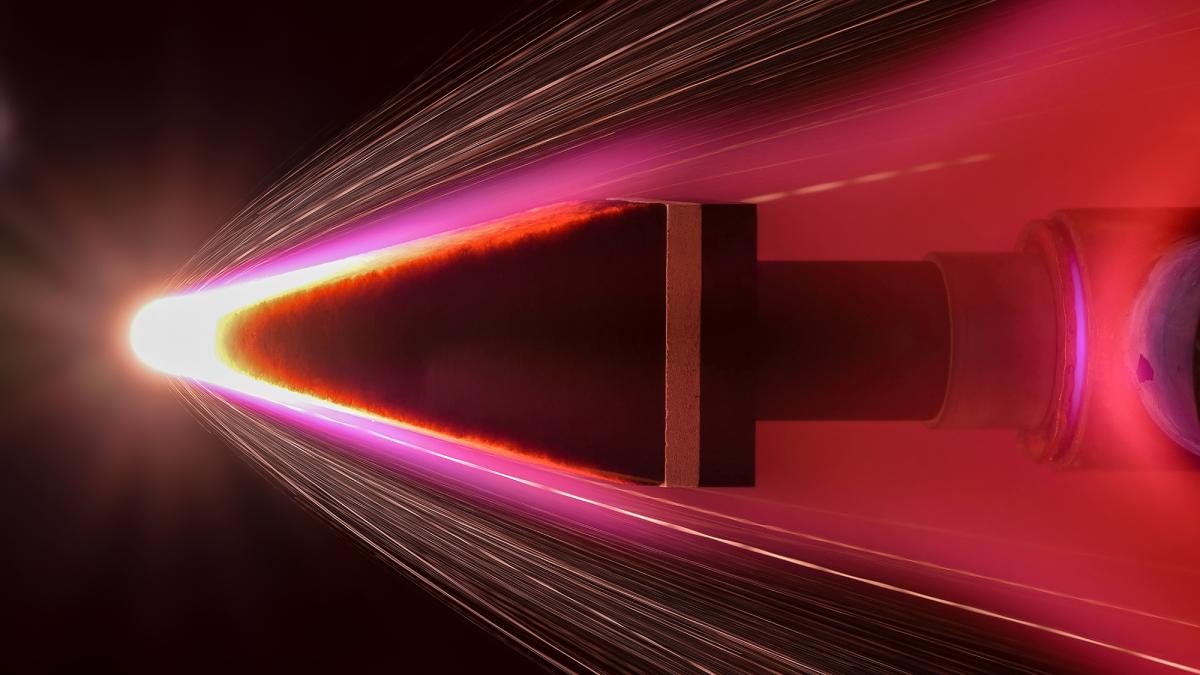
Atmospheric entry has commenced. You feel an acute force press on your chest as the Earth’s atmosphere decelerates your space capsule from its hypersonic velocity eight times greater than a speeding bullet, converting its kinetic energy into something equally dangerous: thermal energy. Aware of the extreme high-temperature conditions your capsule is currently enduring, you are not surprised to see the radiant glow of ionized air plasma out the spacecraft window. Without the sacrificial decomposition of the ablative thermal protection system (TPS), the vehicle, along with your crew, would be vaporized. At the CHESS Plasmatron X, ablative TPS materials are put to the test and studied, being subjected to entry-like high-enthalpy plasma flows. In this image, a wedge of low-density carbon fiber material was injected into supersonic air plasma. The nose of the sample, normally black, radiates white-hot at over 2,000°C, while mechanical erosion of fibers (i.e., spallation) manifests as brilliant streaks emanating from the leading edge. This ongoing research into spallation-induced mass loss is critical in engineering efficient and effective TPS for future space vehicles. So, as your perilous descent concludes, you can rest assured in the innovative research within the world of hypersonic materials, promising safe passage home.
3RD PRIZE ($200 AWARD)
Biological Rhapsody: Is this the label-free microscopic life? Is this just an Andy Warhol piece?
by Rishyashring Raman Iyer from Electrical and Computer Engineering

In 1889, Oscar Wilde said, "Life imitates art far more than art imitates life." About 70 years later, in 1960, the first laser was operated by shining a flash lamp through a ruby crystal. Two years later, the acclaimed artist Andy Warhol was fascinated by Marilyn Monroe, the target of a million photo flashes, and her tragic life. Drawn to her fleeting nature of fame, he created a series of iconic portraits, where the actress's beauty was immortalized through the artist's surreal hues and a saturated palette. Nearly 60 years later, my colleagues and I developed the VAMPIRE microscope that harnessed the power of laser-matter interactions far beyond its previous reaches for optical imaging. We created four simultaneous linear and nonlinear interactions between biological samples and an ultrashort laser infrared laser to generate photons across the color spectrum, which describe the sample's structural, metabolic, and biochemical state. I show a small 1/4 sq. mm section of a mouse tail under our VAMPIRE microscope. Now, the surreal hues and saturated palette are not just an artist's choice but a close representation of the actual colors of the photons generated from the samples inherently, perhaps telling us the fleeting nature of life.
HONORABLE MENTION ($100 AWARD)
The Invisible Architecture: Decoding Concrete's Micro-World by Bayezid Baten from Civil and Environmental Engineering
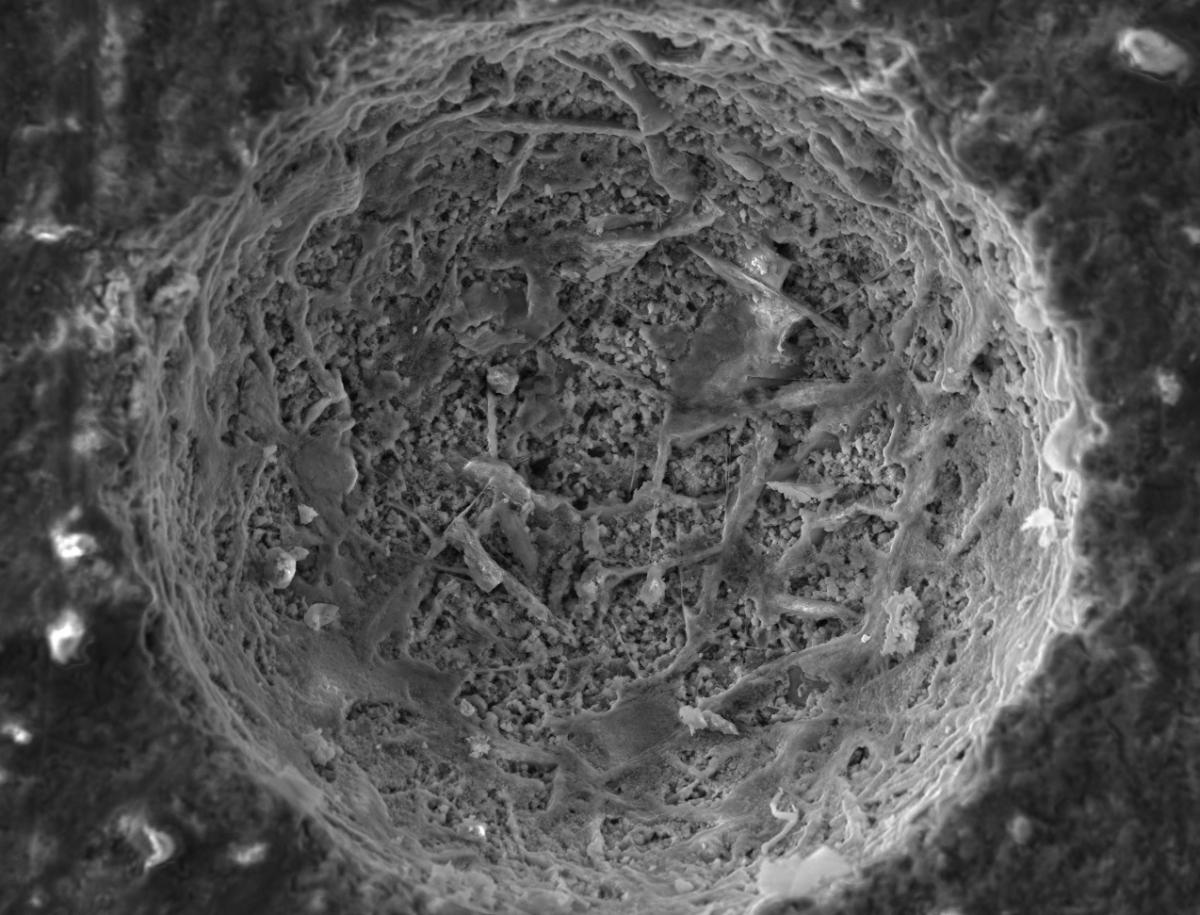
Within the confines of this striking image, captured through the lens of a Scanning Electron Microscope, lies a world often unseen yet foundational to our modern existence. This is not a distant alien landscape, nor the surface of a remote asteroid. It is, in fact, a glimpse into the secret life of high-performance concrete – a material so ubiquitous in our lives, yet so rich in hidden detail and complexity. What we perceive as solid and impenetrable at our scale morphs into a complex network of voids and particles, a testament to the intricate architecture hidden within. The textures are diverse: some areas are rugged and pitted, reminiscent of a weathered mountain face, while others appear smooth and polished, like the surface of a tranquil lake. This disparity illustrates the complex interactions occurring at the micro level, where chemical processes and physical forces converge to define the very essence of this material. My research delves into this unseen world, exploring how alterations in material composition transform this microstructure, and seeking to optimize the performance at the microscale for superior performance at the macroscale which testifies its incredible strength, resilience, and durability.
PEOPLE'S CHOICE ($100 AWARD)
Inspired by Plants by Alexandra Spitzer from Materials Science and Engineering
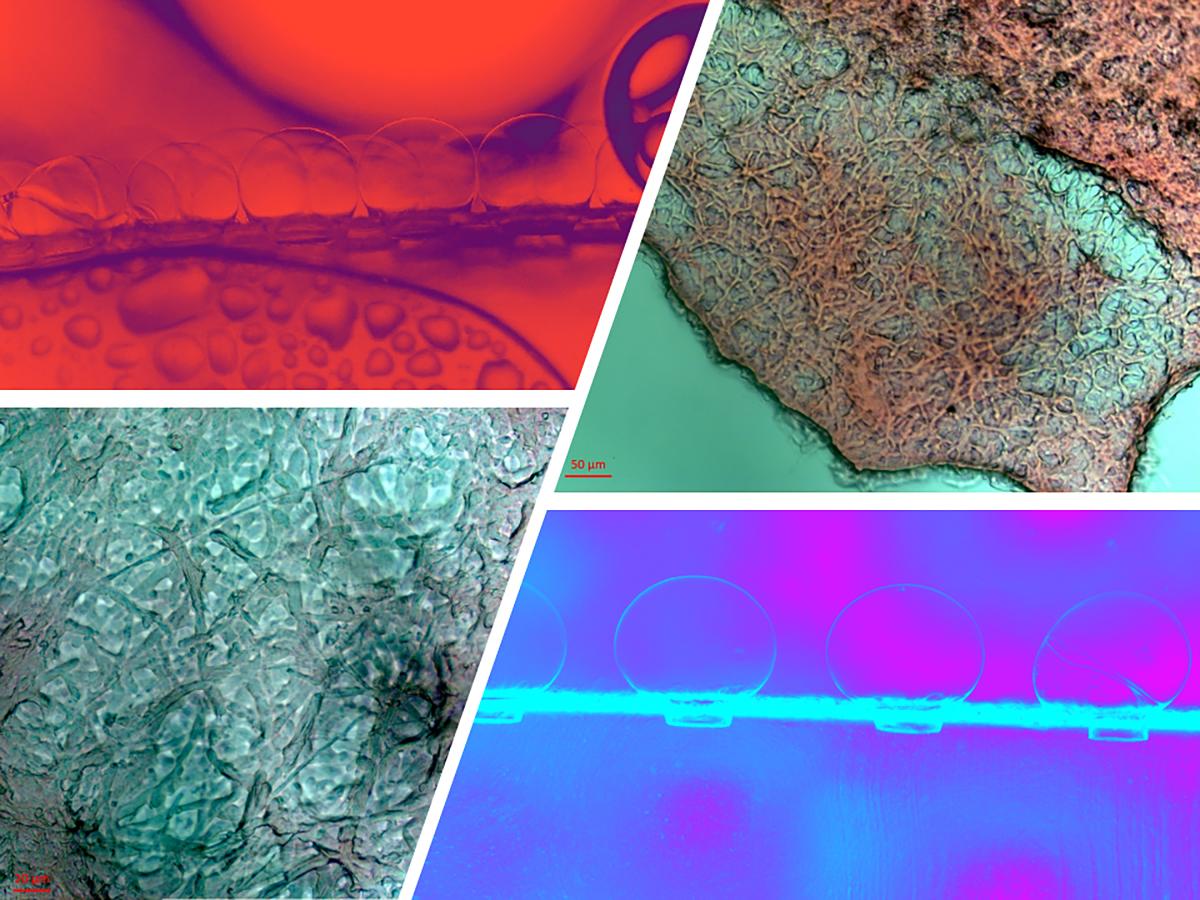
Highly sensitive to changes in cues from their environments, plants have the ability to adapt, become more mechanically robust, and flourish. Throughout my graduate career I have gained great inspiration from plants both in research and my personal life. My home is filled with houseplants because I think they are beautiful, but they also serve as a daily reminder of resiliency, pushing out new growth even when their water is lacking, or bending to catch a bit more sunlight each day when they are shaded, always finding ways to flourish. Inspired by this resiliency, my research focuses on understanding mechanisms in which plants respond to environmental cues to develop robust mechanical properties and leveraging these mechanisms to develop synthetic materials with responsive material properties. Strand like images depict mycelium hyphae adapting their growth and resulting mechanical properties in response to changes in substrate composition. Bubble-like images depict two examples of strain-stiffening, soft, actuating devices developed to mimic osmotic actuation and swelling of nonvascular plant tissue. These beautiful images serve as a tribute to the beauty of plants, and what they can inspire and teach.
The semi-finalists were chosen by an interdisciplinary panel who judged entries on 1) connection between image, text, and research, 2) originality, and 3) visual impact.
For more details about the competition, see the Image of Research website.